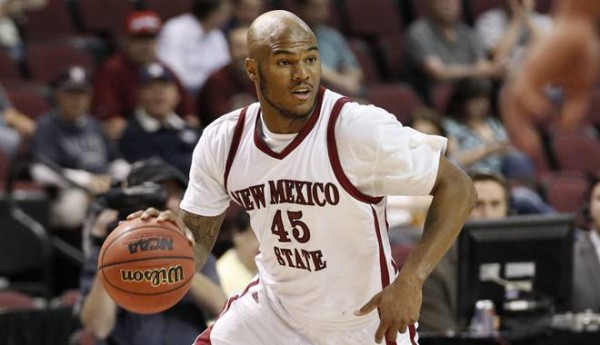The WAC’s New Additions Reveals Just How Far the League Has Fallen
Posted by Chris Johnson on October 10th, 2012Chris Johnson is an RTC Columnist. He can be reached @ChrisDJohnsonn.
Conference realignment has not been kind to college basketball. There are exceptions to this statement: The Atlantic 10, who over the past year added VCU and Butler, very much won out. But on the whole, hoops leagues have watched flagship programs jump ship to chase lucrative media rights contracts and better positioning in the increasingly football-oriented college athletics landscape. The winds of change prompted high-profile departures from the Big East (West Virginia, Notre Dame, Pittsburgh, Syracuse), pillaged the CAA (Old Dominion, Georgia State, VCU) and swiped thriving outfits from other leagues. While the reasons sometimes differed – with a few exceptions, football and TV money reigned supreme; the variant motives were more a matter of degree than type – the overall result was mostly unilateral. Hoops conferences were weakened, either by losing teams to football-savvy and/or more monied leagues, taking on substandard replacements or having natural rivalries eroded. The good news is we’re witnessing a temporary conference-hopping lull after a summer teeming with realignment buzz. The college hoops offseason is a long and frustrating stretch that challenges the outer limits of creative resolve. Filling that gap with realignment news, particularly when that news includes negative consequences for the sport’s competitive balance, is not fun. We should probably enjoy this peace while it lasts, because conference loyalty is hardly the same enduring relationship it used to be. These are massive changes with lasting impacts. College hoops may never be the same.

It will fall on programs like New Mexico State to carry the WAC’s flagship going forward (Eric Jamison/AP).
Through all the program-hopping and controversial departure dates and spiteful conference tournament bans (I’m looking at you, CAA), there is no league that learned the perils of realignment in a more devastating way than the Western Athletic Conference. Over the past two decades, the once-thriving mid-major outfit has suffered a slow and agonizing decline, with a whopping 24 schools leaving for greener pastures. The extended bout of membership attrition prompted the WAC to steep to new levels of realignment hopelessness. That’s no disrespect to Cal State Bakersfield and Utah Valley, which the league announced Tuesday will gain full membership by July 1 of next year and begin competition in 2013, but is this the best the WAC can do? When your membership has been whittled down to four and league administrators have relegated football to the BCS ranks (a tell-tale sign of league futility), the answer is, almost invariably, yes.
The WAC will suit up 10 basketball teams this season, only four of which (New Mexico State, Seattle, Denver and Idaho) will remain beyond this season. Utah Valley and Cal State Bakersfield are stopgap solutions, but they may not be enough to ensure long-term stability. With Utah State and San Jose State set to join the Mountain West, Louisiana Tech and UT-San Antonio headed to Conference USA and Texas-Arlington and Texas State making the geographically logical step to the Sun Belt, the WAC has six members for 2013-14 – provided Idaho’s courtship with the Big Sky conference leads to yet another defection. If the Vandals bolt, the two-year exemption preserving the league’s automatic NCAA Tournament berth will expire, meaning the WAC could be left for dead if another additive insurance plan is not in place. Under these hazardous conditions, convincing new teams to take up residence in a splintering league won’t be easy. The WAC will likely look to the Great West, where it found Cal State Bakersfield and Utah Valley, or solicit other aspiring Division II schools and independents. Football’s demise leaves the league in a tenuous position, both financially and competitively. As it scours the bottom rungs of Division I to fill its membership, the lack of long-term security will scare away most programs considering joining a new league. These are bad, bad times.
The realignment disaster has plunged the WAC into a state of emergency. The league will need to reinvent itself by plucking lesser-known entities from remote leagues to stay afloat. Surviving the very worst saga of realignment demolition – other leagues have taken their lumps, sure, but they’ve got nothing on the WAC – will be a difficult process, but there’s good reason to think the WAC can make it through what almost everybody can agree is a near-death experience. Denver, Seattle and New Mexico State are three very good basketball programs, each with multiple NCAA Tournament bids very much within reach. The Aggies have made the Tournament two times in the last three seasons, and both Denver and Seattle (the Redhawks have 11 NCAA Tournament appearances) are well on their way to similar postseason outcomes. That’s the making of a solid hoops base, three ascendant programs with very bright futures.
The next step involves filling out the rest of its membership with the type of emerging, forward-thinking programs that can lead the WAC out of its realignment doldrums. League administrators will need to adapt a Moneyball-type ethos – If Cal State Bakersfield and Utah Valley mirror on base percentage and walk rate, the WAC is no doubt on the right track – and plumb the depths of D-I competition for hidden gems, because the WAC isn’t convincing any established programs to join its ranks amidst all this turmoil and uncertainty. Utah Valley and Bakersfield won’t kick-start the WAC’s massive rebuilding project. They are mere additions, band-aids to keep ship above water. But still, they were necessary additions. The WAC needed programs, any programs, really. So in a crude, numerical sense, this is a positive step for the league’s future. Navigating these rough waters and securing a promising hoops future is another matter entirely.












































